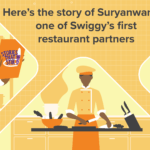Dim sum, a Cantonese culinary tradition, is much more than a meal—it’s a cultural experience. With its assortment of small, savory, and sweet dishes typically paired with tea, dim sum has traveled far beyond its origins to become a global phenomenon. The phrase “dim sum” translates to “touch the heart,” perfectly encapsulating the intention of these bite-sized delights: to provide warmth, comfort, and satisfaction.
This blog takes you on a journey through the fascinating history of dim sims origin, its evolution into a modern dining trend, and why it continues to captivate food enthusiasts worldwide.
The Ancient Tale of Dim Sum Origin

Dim sum traces its origins to ancient China, particularly during the Tang Dynasty (618-907 AD). Historically, tea houses became popular rest stops along the Silk Road for weary travelers. These establishments offered a refreshing break with tea and light snacks, laying the foundation for what we now know as dim sum.
By the time of the Song Dynasty (960-1279 AD), the culture of drinking tea became widespread. To complement the tea-drinking ritual, small dishes were introduced to enhance the experience. These morsels were simple yet flavorful, catering to the diverse tastes of patrons.
Dim sum gained prominence in the Cantonese-speaking regions of southern China, particularly Guangdong Province. As time went on, chefs in these regions began perfecting the art of creating dim sum dishes, turning them into a form of culinary craftsmanship. Dumplings, buns, and rolls became intricately crafted with delicate flavors, reflecting a balance of taste, texture, and artistry.
Modern-Day Variations and Innovation From Dim Sum Origins:

Dim sum has evolved significantly from its traditional roots. What began as a modest tea-time snack has transformed into an elaborate dining experience, often enjoyed during weekend brunches in bustling restaurants worldwide. While traditional dishes like har gow (shrimp dumplings), siu mai (pork dumplings), and char siu bao (barbecue pork buns) remain staples, modern variations and fusion innovations have made dim sum more inclusive and diverse.
Fusion Dim Sum
Contemporary chefs have introduced creative twists to traditional recipes, incorporating global flavors and ingredients. For example, truffle-infused dumplings, foie gras buns, and even dim sum made with Western-style cheeses have gained popularity. These inventive adaptations ensure that dim sum continues to appeal to evolving palates.
Dietary Preferences and Vegetarian Dim Sum
To cater to dietary restrictions and preferences, vegetarian and vegan dim sum options have become widely available. Dishes made with mushrooms, tofu, and other plant-based ingredients ensure that everyone can enjoy the dim sum experience. Gluten-free wrappers and low-calorie versions have also emerged, accommodating a wider audience while retaining the essence of this culinary art form.
The Art of Presentation From Dim Sum Origin
Modern dim sum also places a significant emphasis on presentation. Restaurants often serve these dishes in intricately designed bamboo steamers or on elegant platters, adding a visual appeal that matches their exquisite flavors. The rise of Instagram-worthy dim sum, featuring colorful dumplings or uniquely shaped buns, has further propelled its global popularity.
Read about the History of Dim Sum and Now Craving? Order from Swiggy and Enjoy It at Home
Dim sum is traditionally enjoyed in a lively restaurant setting, with carts wheeling around offering freshly steamed or fried dishes. craving some? Search for “Chinese restaurants near me” and step out.
However, the convenience of food delivery platforms like Swiggy has made it easier than ever to savor dim sum from the comfort of your home.
Swiggy brings the best dim sum restaurants in your city to your fingertips, offering everything from classic favorites like xiao long bao (soup dumplings) to innovative creations like dessert dim sum. Pair your dim sum with a hot cup of green or jasmine tea for a complete experience. Whether you’re hosting a small gathering or indulging in a solo feast, order food online ensuring speed and quality.
Conclusion
Dim sum’s journey from the tea houses of ancient China to global tables today is a testament to its universal appeal. Rooted in tradition yet adaptable to modern tastes, dim sum continues to “touch the heart” of food lovers around the world. Its intricate craftsmanship, diverse flavors, and cultural significance make it more than just a meal—it’s a celebration of heritage and innovation.
Whether you enjoy it in a bustling restaurant with friends or through the convenience of Swiggy at home, dim sum is an experience to savor. So the next time you dip a dumpling into soy sauce or bite into a fluffy bao, take a moment to appreciate the centuries of history and artistry behind this Middle Eastern classic.
FAQ
1. What is the difference between momo and dim sum?
While both are steamed or fried dumplings, momo is a Himalayan dish, often stuffed with meat or vegetables, and served with a spicy chutney. Dim sum, on the other hand, is a Cantonese culinary tradition encompassing a variety of small dishes, including dumplings, buns, rolls, and desserts. Dim sum has a broader range of flavors and preparation techniques compared to momo.
2. What is the meaning of “dim sum” as per history of Dim Sum?
The term “dim sum” translates to “touch the heart” in Cantonese. This name reflects the original purpose of these small dishes: to provide comfort and delight as an accompaniment to tea. Over time, dim sum has grown into a full-fledged dining experience while retaining its heartfelt essence.
3. Are there vegetarian dim sum options?
Absolutely! Vegetarian dim sum options are widely available and often just as flavorful as their meat-based counterparts. Popular choices include vegetable dumplings, tofu rolls, and mushroom buns. Modern dim sum menus also feature innovative plant-based fillings that cater to vegan and vegetarian diners.
Author Bio
Satisfying your cravings, one bite at a time. Discover the best eats, trends, and uncover the hidden gems with us to make your online ordering or dining experience a memorable one.
















































































